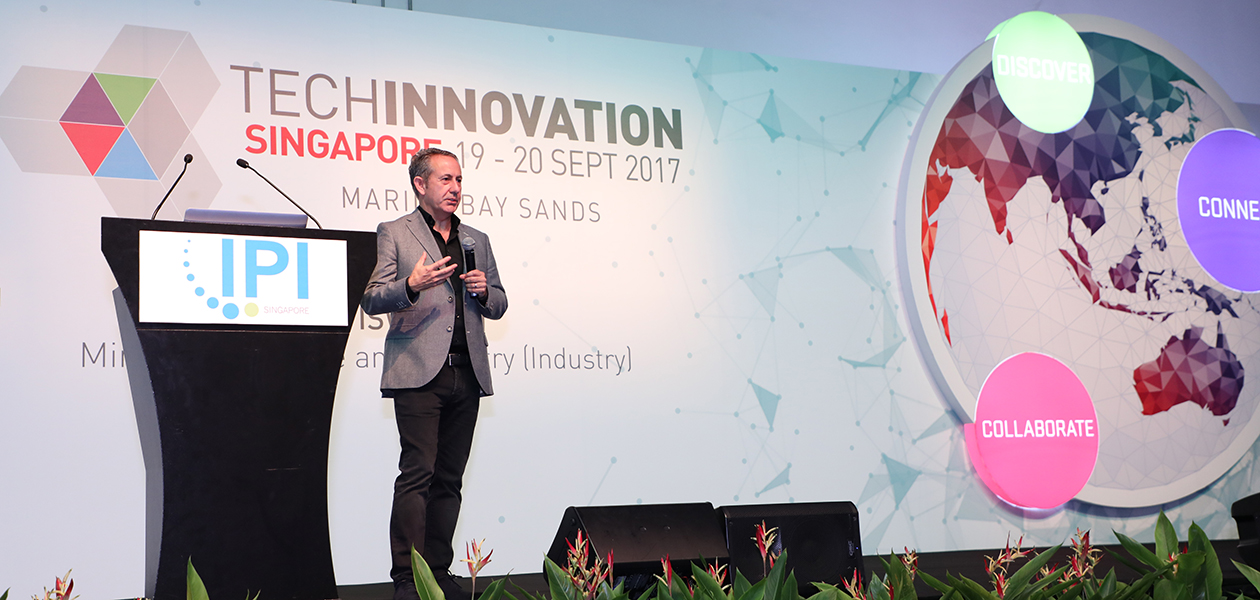How co-creation is a boon for the healthcare sector
Sean Carney, Chief Design Officer of Royal Philips, shares his insights into how co-creation drives innovation and creates value in the healthcare sector.
Illness and frailty are part and parcel of the human condition, and as populations around the world age, the global healthcare system is coming under immense strain to meet medical demands.
“The world is faced with a significant number of health challenges,” said Sean Carney, Chief Design Officer of the leading electronics firm Royal Philips, in his keynote speech at TechInnovation 2017. “One in three people will be diagnosed with cancer in their lifetimes, more than 500 million will be suffering from respiratory illnesses, a quarter of a million with diabetes and an estimated one billion adults with hypertension.”
However, amidst these daunting circumstances, opportunities abound for researchers, clinicians, inventors and entrepreneurs to band together and co-create new healthcare technologies. By embracing an open innovation mindset to translate ideas into practical inventions, the capabilities of healthcare professionals can be amplified to benefit a greater number of patients.
“There are three major areas of opportunity in healthcare innovation,” said Carney. “They are: the personalisation of care, the industrialisation of care and inclusive care.”
Bespoke healthcare
As each patient is a unique individual with his or her own particular medical needs, a one-size-fits-all approach to healthcare is unlikely to perform optimally in the long run, Carney continued. With the escalating demand for personalised care, innovations that target specific subgroups of patients are becoming increasingly relevant.
He cited the example of how Royal Philips prioritised their innovation efforts around children, which led to the development of its Ambient Experience Computed Tomography (CT) suite. Children were made to feel less anxious during CT scans with the suite’s calm lighting, entertaining projections and soothing music. This significantly improved the quality of diagnostic images and reduced the need for repeated scans.
Importantly, the technologies deployed in the Ambient Experience CT suite were developed consultatively with various stakeholders within the healthcare industry. The positive outcomes exemplify how co-creation can translate to meaningful, customised solutions, said Carney.
Healthcare in bulk
At the other end of the spectrum, innovation can also drive the industrialisation of care—the provision of efficient healthcare at scale. Conceding that although the term ‘industrialisation of care’ sounds terrible, Carney said that there are aspects of healthcare that do indeed mimic industrial processes.
As an illustration, he highlighted the radiology departments in hospitals, whose staff process hundreds of X-ray images a day, often manually. “It’s like a factory line!” he exclaimed.
While technology has overhauled traditional factory lines in the manufacturing industry, there is still plenty of room for the healthcare sector to innovate so that certain tedious tasks—such as patient monitoring and diagnostic image processing—can be automated. In this aspect, Royal Philips has helped hospitals make headway by tapping into digitisation and the internet of things.
“Last year, we tracked 275 million patients with our patient monitors,” Carney declared. “We managed 23 petabytes of imaging study data consisting of 145 billion images for healthcare providers, and we now have 9.7 million IoT devices connected to our HealthSuite Cloud on the internet.”
These impressive feats of digitisation would not have been possible without the engagement of third-party developers who helped accelerate the pace of innovation, said Carney. He further emphasised that when people from different backgrounds come together to generate ideas, new use-cases for technologies tend to emerge, thereby multiplying exponentially the value of each invention.
Fostering a culture of co-creation
Despite the benefits of co-creation, accommodating and integrating the views of multiple stakeholders can be difficult. Hence, Carney recommended a concrete framework for co-creation used at Royal Philips.
“First, you need to understand people in their context,” he said. To gain this ‘local knowledge’, fieldwork is essential. By taking the pulse of the situation on the ground, one can then clearly articulate what people value. This in turn creates insights that can be transformed into concepts.
The building and testing of concepts is the final and, arguably, most difficult phase of the co-creation framework, Carney noted. Nonetheless, by keeping the iterative process open to people from diverse disciplines and expertise, concepts can be improved in a stepwise manner until they achieve their maximum potential.
“With this complex and changing world, it is impossible to innovate alone. Finding better solutions and creating value requires collaboration between different people and organisations. So, I hope that over the next two days, you will forge meaningful partnerships at TechInnovation, benefit from one another’s unique perspectives and find ways which you can work together,” Carney concluded.

